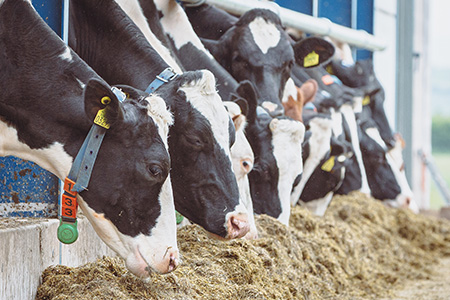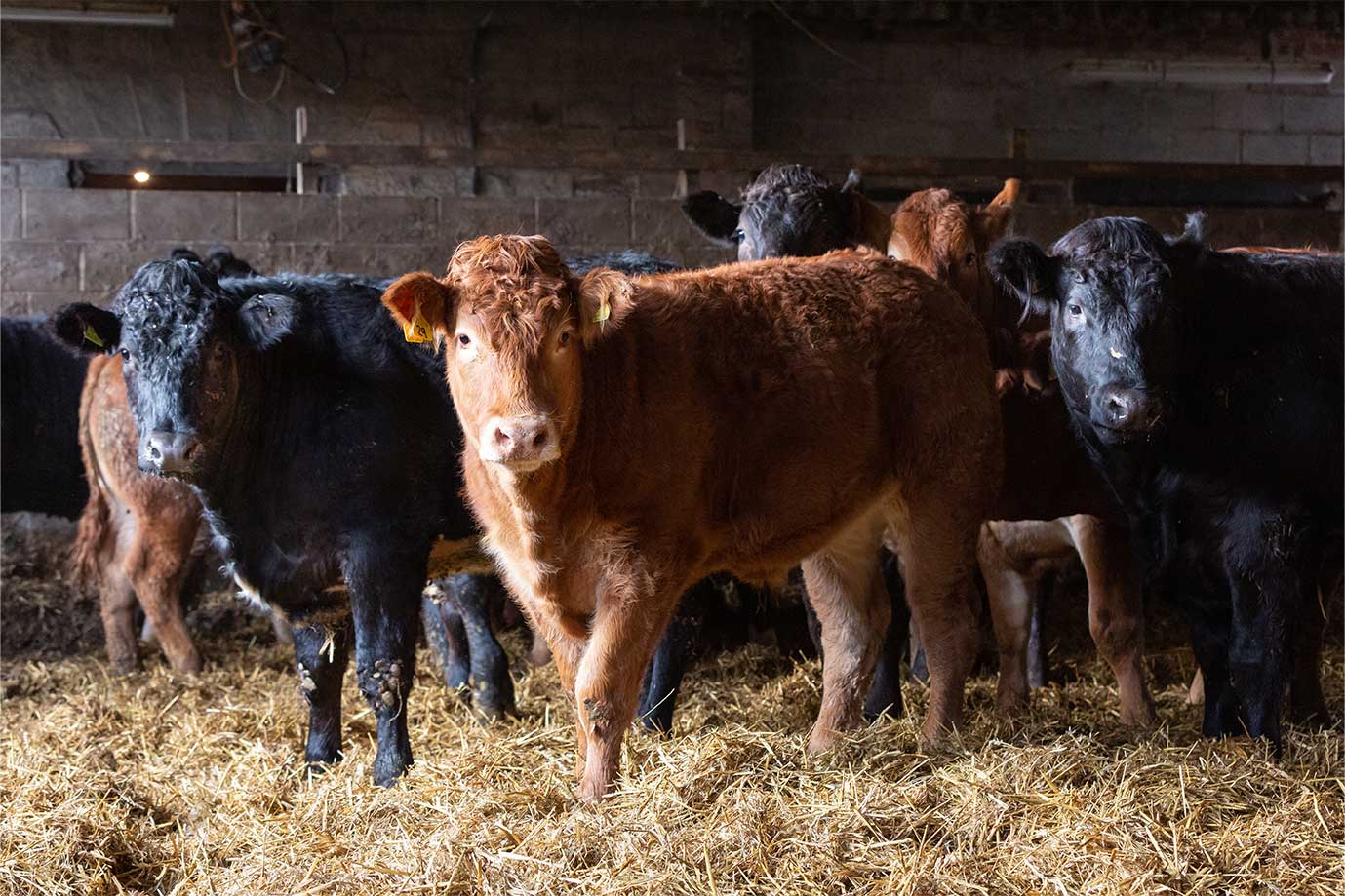TIME4FINISHING: Parasite Control In Finishing Beef Cattle

Parasites in finishing cattle can cause up to 10% body condition loss, increasing the time it takes to reach slaughter weight[1].
Quarantining and treating any new cattle brought on-farm for parasites, as a priority, will help to prevent new outbreaks within existing herds.
In addition, it’s important to remember that lice, mites and liver fluke can affect finishing beef cattle during winter housing so make sure you know what to look for, and how to prevent and treat infestations, by reading our guide below:
[1] Beef Parasites – Westpoint Farm Vets
Lice and mites
The closeness of housed cattle can make mites and lice easily transmissible between animals. Thick winter coats also provide optimal conditions for lice to breed.
There are two types of lice that affect cattle in the UK: chewing and sucking lice, alongside two types of common mites: burrowing (sarcoptic mange) and non-burrowing (chorioptic mange).
Treatment
Ideally, cattle should be proactively treated for lice and mites at housing to prevent outbreaks over winter. However, if infestations are present on one or more cows, it’s important to remember:
- The type of lice or mites should be identified before treatment
- There are a range of treatment products available
- All other cattle within the housed group should be treated to prevent reinfestation
- Withdrawal periods may be applicable after using treatment products
- A repeated dose of products may be required for effective treatment

Lice
Pour-on and spot-on synthetic pyrethroids and pour-on and injectable macrocyclic lactones (MLs) are available for the treatment of lice. The injectable treatment is only effective against sucking lice.
These treatments will not be effective against lice eggs and a second course of treatment is recommended if the product residual efficiency is less than two weeks.
Lice infestations can be a sign that cattle may have underlying health issues. Therefore, making sure your cattle are kept in optimal condition through correct feeding will ensure they have a healthier immune system, reducing their susceptibility to infestations and diseases. Read more about feeding finishing cattle here: Time 4 Finishing.
Mites
The pyrethroid permethrin, ivermectin, doramectin, eprinomectin and moxidectin pour-on treatments can be used to treat non-burrowing mites. Burrowing mites should be treated with systemic macrocyclic lactones (MLs).
Treated animals should be moved to new housing that has not been used for cattle in the previous three weeks.
Speak to your in-store or on-farm specialist for advice on the best products to use to prevent or treat lice and mites in your herd.
Liver Fluke
Finishing cattle grazed in the autumn will be at risk of ingesting liver fluke larvae which, if left untreated, could turn into adult fluke during late winter and early spring. Juvenile fluke migrate through the liver, where they cause liver damage and haemorrhage, to the bile ducts where they mature. Once in the bile ducts, the fluke cause chronic disease which can result in a reduction in feed conversion efficiency and poor growth rates.
Treatment
Liver fluke risk is farm-specific, and if present can either cause chronic or acute disease. Flukicides can be used to prevent liver fluke larvae from developing into adults or to treat those that have already developed over winter.
To help determine whether your cattle are at risk of liver fluke consider the following environmental factors:
- Pasture and weather conditions – cattle grazed on wet, low-lying pasture or near a water source will be more at risk of contracting liver fluke
- Regional risk – the NADIS parasite forecast provides useful area-specific alerts

Your vet can also conduct:
- Faecal egg counts – treatment may be required if more than 5 eggs per gram are found
- Blood tests
Make sure you seek advice from an on-farm or in-store specialist, or a vet, to determine the risk level of liver fluke on your farm. If your herd is found to be at risk, they will also be able to ensure the right flukicide is used at the right time and in the right way as part of your herd health management plan.
Different products will treat the fluke at different stages. Some treat larvae, while others are effective against adult fluke. Additionally, withdrawal periods following treatment may be applicable.
Remember:
- Generally, if sheep are found to have fluke on a farm, cattle will be affected too
- Pasture management measures such as topping rushes, reducing poaching and improving drainage will reduce the herd’s exposure to liver fluke larvae during grazing

























